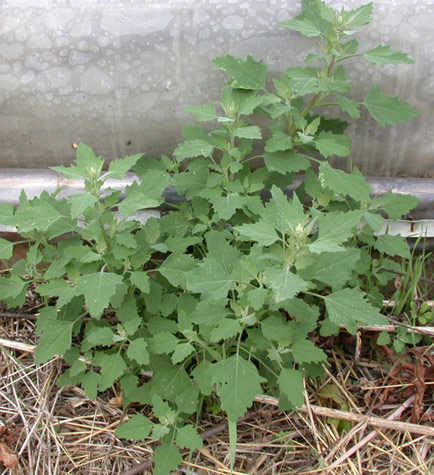Lambsquarter
Scientific name:
Chenopodium album
Synonyms: Common lambsquarter, White goosefoot, Fat hen
 Photo courtesy of Randall Prostak
Photo courtesy of Randall Prostak
University of Massachusetts
Habitat
Cultivated areas mostly rich in nitrogen
Affected crops
Corn, soybean, potato, and other agricultural crops
Distribution
Worldwide
Description
The leaves are light-green, narrow, with almost parallel sides, and diamond-shaped. The undersides are covered with white powder. The flowers are green, tiny, without petals, and located at the tip of the branches. The flowers'
undersides are also covered with white powder. Each plant can produce up to 75,000 seeds.
This weed is easily mistaken as pigweed and vice-versa.
Effects and impacts
Lambsquarter is an alternate host to beet leafhoppers that transmit viruses.
The leaves are eaten as vegetable and the seeds are a good source of protein when prepared as hot cereals or baked goods.
Studies show that Lambsquarters are found to be resistant to Atrazine, Metribuzin, Thifensulfuron-methyl, Simazine, Cyanazine at some corn, soybean, and potato farms, croplands, and orchards in some parts of Europe and USA (Weed Science, 2005).
Methods of control
- Proper seed selection
- Through land preparation
- Proper weed management. The weed is easy to pull as it is shallow rooted.
- Regular plant monitoring

